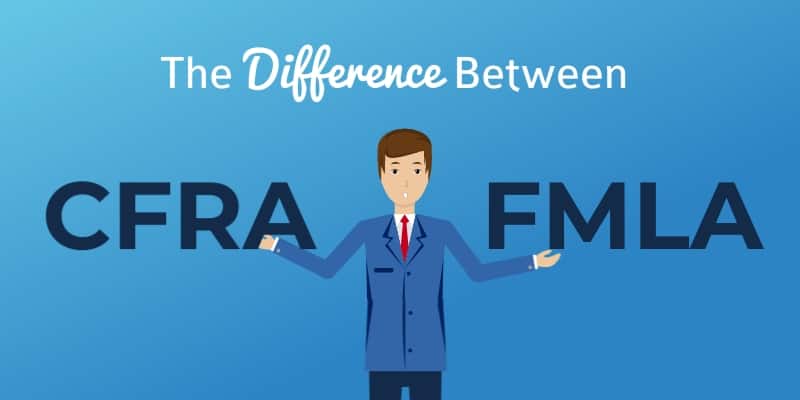
When a California employee requires a leave of absence, they may be eligible for leave under two key statutes: the California Family Rights Act (CFRA) and the Family Medical Leave Act (FMLA). Although these laws have similarities, they vary slightly in terms of coverage, eligibility requirements, and reasons for taking leave. This blog post explores the difference between the CFRA and FMLA.
1. Coverage and Applicability
The FMLA is a federal law that applies to eligible employees across the United States. In contrast, the CFRA is a California-specific law that mirrors the FMLA but applies only to employees in California. The FMLA covers employers with 50 or more employees, while the CFRA applies to employers who directly employ 5 or more individuals.
2. Eligibility Requirements
Under CFRA and FMLA, employees must meet specific criteria to be eligible for leave. The FMLA requires employees to have worked for their employer for at least 12 months, have worked at least 1,250 hours in the previous 12 months, and work at a location where the employer has 50 or more employees within 75 miles. The CFRA has the same length of service requirements – worked for at least 12 months and at least 1,250 hours in the previous 12 months – but does not require the employees to work within a certain radius. This means the employees can be located anywhere in the United States or any territory in possession of the United States.
2. Reasons for Leave
Both CFRA and FMLA provide leave for specific reasons. These include the birth of a child, adoption, or foster care placement; care for a spouse, child, or parent with a serious health condition; for an employee’s serious health condition; and emergencies involving family members on military duty. However, CFRA includes additional provisions that cover leave to care for a registered domestic partner or a designated person with a serious health condition. Furthermore, although CFRA, like the FMLA, extends leave to employees suffering from a serious health condition, the CFRA excludes pregnancy, childbirth, or related medical conditions from such coverage.
4. Leave Duration
FMLA allows eligible employees to take up to 12 weeks of unpaid leave within a 12-month period (exception: this may be extended to 26 weeks for an employee to care for a family member injured in military service). The CFRA provides the same amount of leave, independent of any leave taken under FMLA. This means in some circumstances, eligible employees in California can take up to 24 weeks of leave. For instance, an eligible employee disabled by pregnancy may take up to 12 weeks of leave under the FMLA and up to an additional 12 weeks to care for that child under the CFRA. The additional leave is one of the key differences when looking at the CFRA vs FMLA.
5. Employer’s Responsibilities
Employers covered by the CFRA and FMLA must maintain the employee’s health benefits during their leave. After the leave, employees should be reinstated to their previous position, or an equivalent position with the same benefits, pay, and terms of employment. However, there may be differences in job restoration rights between CFRA and FMLA regarding certain key employees.
Conclusion
While CFRA and FMLA share similarities in terms of their purpose, they have significant differences that impact leave for employees. California employees are fortunate to have a leave statute that covers smaller employers and provides additional benefits, such as the right to take leave to care for a domestic partner or designated person.
Thank you for reading this post on the CFRA vs FMLA. For more information on medical leaves of absence, please look at my previous blog post, CFRA Leave: A Guide to the California Family Rights Act, or my practice areas page on Medical Leaves.



